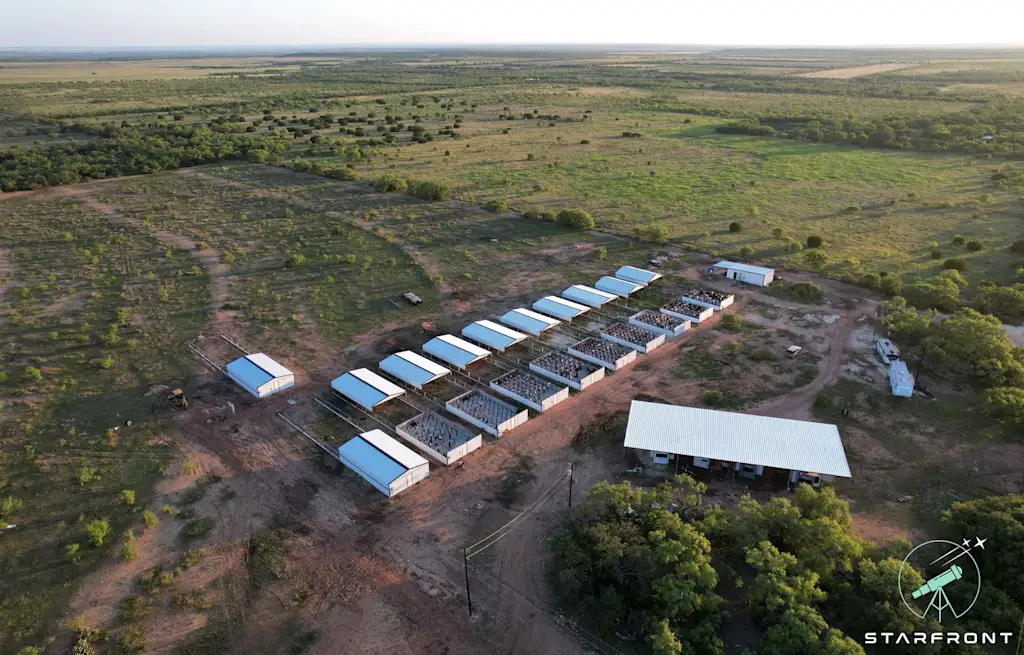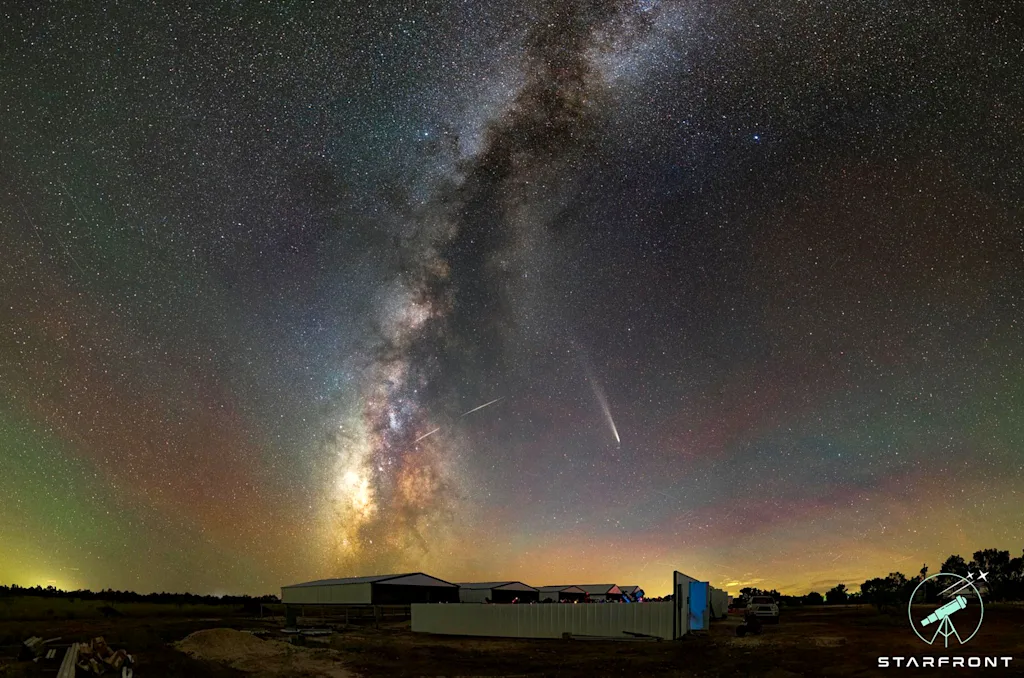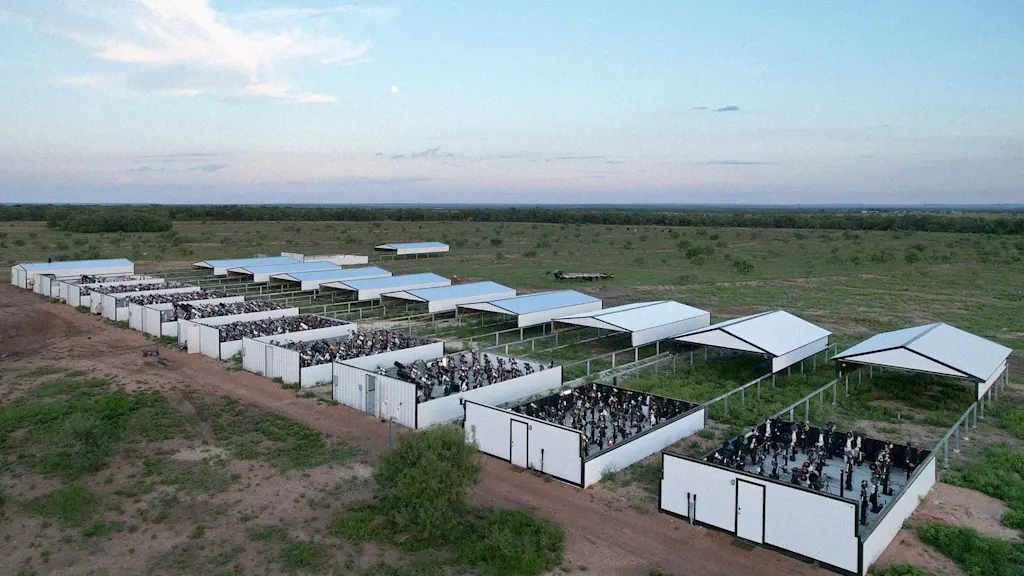In a former cattle field in rural Central Texas, A Startup Called Starfront has quintly Built what it claims is the World’s LarGest Remote Telescope observation by number of experts.
The facility houses more than 400 telescopes, Most of which belong to starfront’s customers-Hobbyist Astronomers and Space-Focused Businesses Who Pay For SCOPE-Decking Space in One of the Company’s 11 Observatorry buildings. Essentially, IT’s a data center for the night sky: customers Ship their telescope, camera equipment, and a mini pc to the site, where the starfront staff install it on a dedicated pier. Once set up, customers can log in over the internet to aim their lenses at stars, planets, or galaxies – ball from a location with clear skies and minimal light pollution.
“We want to provide the options for people to enjoy space on their own terms,” Says cofounder and ceo josh kim. “You could be driven by the desire to participate in scientific discovery, or you might really just want to take pretty amazing pictures that are awe-inspiring and that you can share your friend and family.”
Starfront’s Cofounders Include Engineer-Turned-Space-PHOTOGRAPHER BRAY BRAY FALLS and Serial Entrepreneurs Kim, Dustin Gibson, and Nate Hanks, All of Whom Have Space-Space-SOCCERIENCE. They launched the company about a year ago After realizing how many high-end telescopes sit idle, as tehusiasts struggle with urban light pollution and limited time to Travel to Travel to Dark-Sky Locations.
“That telescopes that was boght with such expert and passion are usually just collecting dust in people’s closets,” kim says.
Even those those with the time and money to travel encounter bad weather or technical issues. It’s not unusual for the owner of a new telescope to spend their first few nights gazing down at cryptic error messages instead of up at the sky, aS they struggle to integrate telescopes, Accessories, and the computers that control them, kim says.
Starfront offers An Alternative: Customers Ship their scopes to the company’s full Built -out Site, Complete With retractable Roofs, High-Speed Fiber Internet, Andhar Amenrities. The roughly 10-Person Team Handles Setup So that Equipment is ready to scan the skans every clear night.
Typically, five or Six Staff Members Work on-Site (often Living in Company RVs) at the location about 90 minutes from abilene. Balancing nighttime observing with daytime business operations can be tough. Sleep is a hard thing to come by in this particular business and in this particular hobby, “Kim says. The company hopes to hire more locally to improve the workload.

For customers, many of whom connect on Starfront’s discord server, the experience can feel like a “star party” Nearly every clear night, kim says. There, Enthusiasts Trade Advice on Everything from International Telescope Shipping to Astrophotography Techniques. Starfront has even coordinated groups imaging sessions in which dozens of customers photo Distributed-paper telescope. Falls have posted images from these efforts on social media, and kim expects customers will eventutically organize soch projects on their own.
Miami-Based Astrophotographer Carlos Garcia Uses The Discord to Share Tips for the Seestar, A Compact, Easy-to-to-Use digital telescope. He posts remotely captured images and videos from starfront’s site to his website, youtube, and social channels. Garcia First Learned of Starfront Through Falls’ Posts and Later Shipped a Seestar and Mac Mini to Texas, Where skies are clearer than in his hometown. He now controls the telescope using remote desktop software.
One big question I get about the observator is if we have ever pointed all the scopes at one one spot? The answer is yes!
This is the result of one such effort, 1650 hours of Exposure in Ursa Major! pic.twitter.com/ipt9cyh7xp
– Bray Falls (@Astrofalls) July 10, 2025
“The Amount of Time that I can spend imaging with the seestar is substantily Higher than if I was to try to image from miami,” GARCIA Says.
When Garcia Joined Starfront, the company’s lowest hosting plan cost $ 150 per month. Since then, Starfront has introduced a $ 99 plan specifically for Seestars. Price are based on a telescope’s swing diameter, and the company has developed a system to maximize real estate while ensuring scopes can rotate freely with colliding.

Although Starfront Didn’T Invent The Remote observatorry, it has scled the concept dramatically while undercutting competors on price and outdoing them on flexibility. The company builds everything in-house, from mounting piors to the weather-tracking software that controls its roofs, kim says.
Starfront is full bootstrapped and relaes on monthly fees for steady cash flow. Soon, It Plans to offer Telescope Rentals AlongSide Pier Rentals, Likely Starting With Seestars, to make the hobby more accessible. Shorter-Term Rentals are unlikely-Variable Weather and Moon Phases Complicate Scheduling-But Kim Says Some Customers May Choose to Sublet Access to his hosted equipment.
Longer Term, The Company Hopes to expand to the southern hemisphere, opening up a completly difference set of constellations and galaxies. Starting in the united states, with the largest amateur astronomy market, was a natural choice, kim says, but even us astronomy buffs are eager to see what they can capture from account the equator.
The Early-Rate Deadline for Fast Company’s Most Innovative Companies Awards is Friday, September 5, at 11:59 PM Pt. Apply today.









